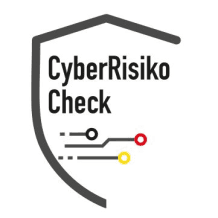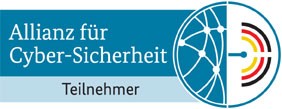Introduction to Volatility2 and Volatility3
Volatility is a widely used open-source framework for memory forensics. It allows for the analysis of RAM images to extract valuable information and evidence. The tools Volatility2 and Volatility3 are two main versions of this software, each offering its own features and enhancements. In this guide, we will examine the essential features and differences between these two versions.
What is Volatility2?
Volatility2 was developed as one of the original tools for memory forensics. It is known for its comprehensive support of various operating systems and file formats. Users could conduct a wide range of forensic analyses with Volatility2, including:
Extraction of process information
Searching and analyzing network connections
Investigation of loaded drivers and modules
Over time, Volatility2 has improved through continuous development and has become the standard tool for many forensic experts worldwide.
What is Volatility3?
Volatility3 is the latest overhaul of the Volatility framework and was developed to overcome the limitations of Volatility2 and to improve performance. The main enhancements of Volatility3 include:
New module architecture for easier extensibility
Support for a wider range of file formats
Improved performance in data analysis
The introduction of Volatility3 marks a significant advance in how digital forensics is conducted and provides investigators with more powerful tools for discovering evidence.
Differences between Volatility2 and Volatility3
While Volatility2 and Volatility3 have the same core function, there are essential differences that can influence the use of both. Some of these differences are:
Architecture: Volatility3 introduces a new module architecture that makes it easier for developers to create and integrate new plugins.
Performance: Volatility3 has been optimized for faster and more efficient handling of large datasets.
Support: Volatility3 supports more formats and is better prepared for new threat landscapes.
Digital forensics experts should pay attention to the features and enhancements of Volatility3 if they want to conduct analyses more efficiently and effectively.
Application possibilities of Volatility2 and Volatility3
Both versions of Volatility are capable of providing in-depth insights into a system's volatile memory information. Typical use cases include:
Investigation of malware attacks
Analysis of data leaks
Identification of suspiciously executed processes
Investigators and security experts can better trace attacks and define preventive measures with this information.
Integration into security tools
Volatility is often used as part of a broader arsenal of security tools. Its flexibility and power make it an indispensable tool for cybersecurity analysts and forensic specialists worldwide. The choice between Volatility2 and Volatility3 may depend on specific application needs and the complexity of the environments being analyzed.
Conclusion
Volatility2 and Volatility3 each provide powerful tools for conducting memory forensics. With its latest version, Volatility3 offers a more modern architecture and improved performance, ensuring that users can stay up to date when addressing newer and more pressing challenges in cybersecurity. It is important to be aware of the features and improvements of both versions to make informed decisions about their application. For organizations engaged in digital forensics, Volatility remains an indispensable tool in the fight against cybercrime.
Volatility2 and Volatility3 in Germany: Current Developments
The significance of Volatility2 and Volatility3 in Germany is continuously growing. According to recent studies by the Federal Office for Information Security (BSI), German companies are increasingly affected by cyber threats. The Bitkom association reports that 84% of German companies have fallen victim to cyberattacks in the last two years.
Particularly in the field of Volatility2 and Volatility3, the following trends are apparent:
Increasing investments in preventive security measures
Heightened awareness of comprehensive security concepts
Integration of Volatility2 and Volatility3 into existing compliance frameworks
EU Compliance and Volatility2 and Volatility3
With the introduction of the NIS2 directive and stricter GDPR requirements, German companies must adapt their security strategies. Volatility2 and Volatility3 play a central role in meeting regulatory requirements.
Important compliance aspects:
Documentation of security measures
Regular review and updates
Proof of effectiveness to regulatory authorities
Practical implementation in corporate daily life
The integration of Volatility2 and Volatility3 into corporate daily life requires a structured approach. Experience shows that companies benefit from a gradual implementation that considers both technical and organizational aspects.
Think of Volatility2 and Volatility3 as an insurance policy for your company: The better prepared you are, the lower the risk of damage from security incidents.
Further security measures
For a comprehensive security strategy, you should combine Volatility2 and Volatility3 with other security measures:
Vulnerability Management - Systematic vulnerability management
Penetration Testing - Comprehensive security testing
Security Hardening - Employee awareness training
Incident Response Plan - Preparing for security incidents
Conclusion and next steps
Volatility2 and Volatility3 are essential components of modern cybersecurity. Investing in professional Volatility2 and Volatility3 measures pays off in the long run through increased security and compliance adherence.
Want to optimize your security strategy? Our experts are happy to advise you on the implementation of Volatility2 and Volatility3 and other security measures. Contact us for a non-binding initial consultation.
🔒 Act now: Have your current security situation assessed by our experts
📞 Request consultation: Schedule a free initial consultation on Volatility2 and Volatility3
📋 Compliance Check: Review your current compliance situation
📌 Related Topics: Cybersecurity, IT security, compliance management, risk assessment
Best Practices for Volatility2 and Volatility3
The successful implementation of Volatility2 and Volatility3 requires a systematic approach. Based on our long-standing experience in cybersecurity consulting, the following best practices have proven effective:
Strategic Planning
A thoughtful strategy is the foundation for successful Volatility2 and Volatility3. Consider the following aspects:
Define clear goals and success metrics
Involve stakeholders early and establish responsibilities
Calculate realistic timelines and budgets
Conduct risk assessment and contingency planning
Technical Implementation
The technical implementation of Volatility2 and Volatility3 should occur gradually:
Analysis of the current situation: Evaluate existing security measures
Gap Analysis: Identify areas for improvement
Pilot Project: Test run in a limited area
Rollout: Gradual expansion to the entire company
Monitoring: Continuous oversight and optimization
Common challenges and solutions
Similar challenges regularly arise when implementing Volatility2 and Volatility3. Here are proven solutions:
Resistance to change
Employees are often skeptical about new security measures. Successful change management strategies include:
Transparent communication about benefits and necessity
Training and further education measures
Engagement of opinion leaders as multipliers
Gradual introduction with quick wins
Budget constraints
Limited resources require a prioritized approach:
ROI calculation for various measures
Phased implementation based on priorities
Leveraging synergies with existing systems
Consideration of compliance requirements
Success measurement and KPIs
The success of Volatility2 and Volatility3 measures should be measurable. Relevant metrics include:
Quantitative Metrics
Number of identified and resolved vulnerabilities
Reduction of average response time to security incidents
Improvement of compliance ratings
ROI of implemented security measures
Qualitative Assessments
Employee satisfaction and acceptance
Feedback from customers and partners
Evaluation by external auditors
Reputation and trust in the market
Future trends and developments
The landscape of cybersecurity is continuously evolving. Current trends influencing Volatility2 and Volatility3 include:
Artificial Intelligence: AI-driven threat detection and defense
Zero Trust Architecture: Trust is not assumed but continuously verified
Cloud Security: Adaptation to hybrid and multi-cloud environments
IoT Security: Protection of connected devices and systems
Quantum Computing: Preparing for post-quantum cryptographic processes
Companies that invest in Volatility2 and Volatility3 today position themselves optimally for future challenges and opportunities.
Your next step
The implementation of Volatility2 and Volatility3 is an investment in the future of your company. Our experts are here to help you develop a tailored solution that meets your specific needs.
Get started today:
📞 Free Consultation: Schedule a non-binding conversation
📋 Security Assessment: Get your current security situation assessed
🎯 Tailored Solution: Development of a custom Volatility2 and Volatility3 strategy
🚀 Implementation: Professional execution with continuous support
Contact us today and take the first step toward a safer digital future.




